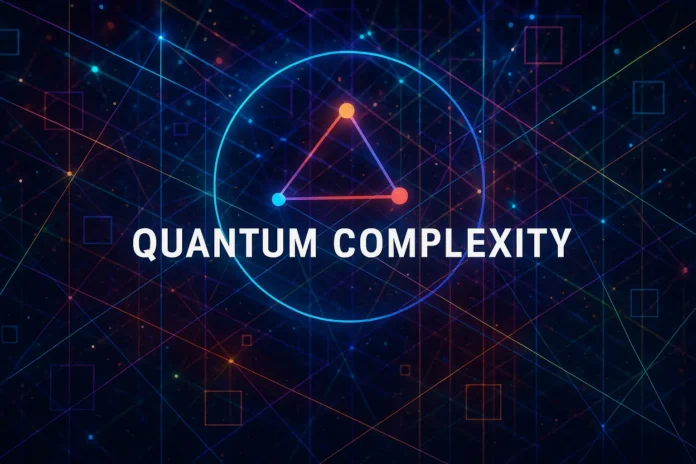Table of Contents
- Introduction
- What Are Restricted Quantum Models?
- Motivation: Why Study Non-Universal Models?
- The IQP Model: Instantaneous Quantum Polynomial-Time
- Structure of IQP Circuits
- IQP Complexity Assumptions
- Hardness of Simulating IQP Circuits
- Relationship to BQP and Classical Classes
- Commuting Quantum Circuits
- Measurement-Based Interpretations of IQP
- Examples of IQP Problems
- Quantum Supremacy via IQP
- Limitations of IQP and Physical Implementations
- Comparison with Boson Sampling
- Matchgate Circuits and Fermionic Models
- DQC1: The One-Clean-Qubit Model
- Clifford Circuits and Gottesman-Knill Theorem
- QAOA as a Restricted Variational Model
- Intermediate Models and Practical Quantum Advantage
- Conclusion
1. Introduction
Restricted models of quantum computing aim to capture computational power achievable without full universality. These models are typically simpler, more experimentally realizable, and serve as platforms for demonstrating quantum advantage without needing fault-tolerant quantum computation.
2. What Are Restricted Quantum Models?
Restricted models are quantum computational frameworks that limit the types of gates, measurements, or initial states. Despite these constraints, many such models perform tasks believed to be classically intractable.
3. Motivation: Why Study Non-Universal Models?
Restricted models:
- Allow early experimental demonstrations of quantum power
- Provide complexity-theoretic insights
- Highlight the role of specific quantum features (e.g., entanglement, interference)
- Help identify minimal conditions for quantum advantage
4. The IQP Model: Instantaneous Quantum Polynomial-Time
IQP circuits consist of:
- A layer of Hadamard gates
- A sequence of commuting gates (usually diagonal in the Z-basis)
- A final layer of Hadamards followed by measurement
All gates commute, and no adaptive operations are allowed during execution.
5. Structure of IQP Circuits
IQP circuits take the form:
\[
H^{\otimes n} D H^{\otimes n}
]
where \( D \) is a diagonal operator composed of gates like \( Z, CZ, CCZ \), all commuting. This structure eliminates timing constraints and supports parallel execution.
6. IQP Complexity Assumptions
It is conjectured that classically simulating the output of IQP circuits within total variation distance < 1/192 leads to collapse of the polynomial hierarchy. This underpins IQP’s complexity-theoretic importance.
7. Hardness of Simulating IQP Circuits
Under plausible assumptions, output distributions of IQP circuits are hard to simulate even approximately for classical computers. This offers a candidate path for quantum supremacy without universal quantum computers.
8. Relationship to BQP and Classical Classes
IQP ⊆ BQP (bounded-error quantum polynomial time), but is not known to contain BPP (classical probabilistic polytime). It captures a subclass of quantum computations with provable classical intractability in sampling.
9. Commuting Quantum Circuits
IQP circuits are a special case of commuting quantum circuits. Other examples include the commuting Hamiltonians studied in condensed matter and quantum phase transitions.
10. Measurement-Based Interpretations of IQP
IQP can be interpreted in measurement-based models (MBQC) on specific graph states. The non-adaptive measurement sequences map directly to IQP-style circuit evaluations.
11. Examples of IQP Problems
Problems well-suited for IQP include:
- Evaluation of partition functions of Ising models
- Sampling from certain parity check codes
- XOR games and stabilizer measurements
12. Quantum Supremacy via IQP
IQP circuits are strong candidates for early demonstrations of quantum supremacy because they are experimentally simpler and require fewer coherence-time resources than universal quantum computing.
13. Limitations of IQP and Physical Implementations
IQP circuits are not universal and cannot solve arbitrary problems like factoring. Implementing large-scale IQP circuits still requires precise gate control, low noise, and good measurement fidelity.
14. Comparison with Boson Sampling
Both IQP and boson sampling are non-universal sampling models. While IQP uses qubits and commuting gates, boson sampling uses photons and interferometers. Each model is hard to simulate classically under different assumptions.
15. Matchgate Circuits and Fermionic Models
Matchgate circuits are classically simulable when restricted, but become powerful when combined with limited extra resources. They model fermionic systems and connect to condensed matter physics.
16. DQC1: The One-Clean-Qubit Model
The DQC1 model uses only one pure qubit and many maximally mixed qubits. It solves some problems believed to be classically hard, such as estimating the trace of a unitary matrix.
17. Clifford Circuits and Gottesman-Knill Theorem
Clifford circuits are efficiently simulable on classical computers. They form the backbone of many restricted models and show that entanglement alone does not guarantee computational advantage.
18. QAOA as a Restricted Variational Model
The Quantum Approximate Optimization Algorithm (QAOA) is a low-depth variational model using alternating applications of problem and mixer Hamiltonians. It offers potential speedups for combinatorial optimization.
19. Intermediate Models and Practical Quantum Advantage
Models like IQP, DQC1, QAOA, and Boson Sampling demonstrate intermediate quantum power—between classical and fully universal quantum computers. They are key to achieving practical quantum advantage in the NISQ era.
20. Conclusion
IQP and other restricted quantum models provide fertile ground for exploring quantum complexity, supremacy, and experimental feasibility. They offer insight into which resources drive quantum power and how advantage may be demonstrated on near-term hardware.




